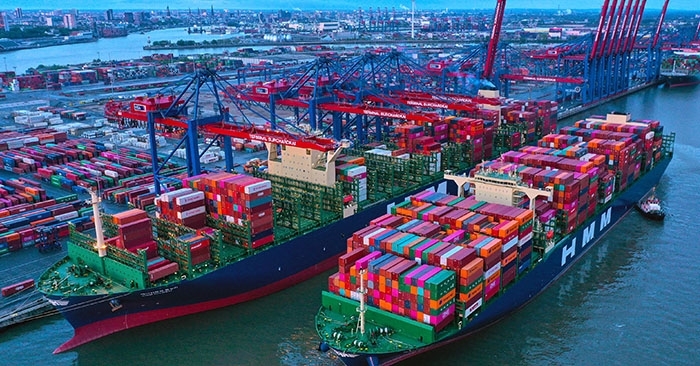Port of Hamburg growth in trade with Indian goods

November 17, 2021
Hamburg is the leading universal port in Germany and Europe’s thirdbiggest container port. In the first half of 2021, the port recorded a 23.4 percent increase in container traffic between Hamburg and Indian ports, writes Axel Mattern Port of Hamburg Marketing
The Indian subcontinent has been one of Hamburg’s most important trading partners for years. India mainly exports grain and plant products as well as metal and chemical products and pharmaceutical products via the Port of Hamburg. In the opposite direction, the main imports are paper products, chemicals, iron, and steel. These goods are shipped by eight liner services linking India with Hamburg. Of these, three are container liner services, three are ro-ro services, and two are general cargo services. Container ships with slot capacities between 6,000 and 13,000 TEU and multipurpose vessels with capacities of 12,000 to 30,000 tonnes are in service. The transit time between Hamburg and the Indian subcontinent is between two weeks for the west coast and three weeks for the east coast, depending on traffic direction and port rotation.
The negative repercussions of the coronavirus pandemic are also affecting throughput in Germany’s largest universal port. Hamburg managed to keep the port open during the first waves of the pandemic. Despite the lockdown, all terminals have continued to operate 24/7. During the first three quarters of 2020, container traffic between Indian ports and Hamburg dropped to 115.000 TEU (down 25.2 percent). In the first half of 2021, the port handled a growing number of containers from and to India. The strong increase in container traffic with India was 23.4 percent.
But the negative effects of the worldwide Covid pandemic are still affecting developments in Hamburg’s cargo throughput. However, according to Port of Hamburg Marketing’s (HHM) assessment, the results in the first half of 2021 give reason to be optimistic that the port will reach a one-digit growth in cargo handling this year. In Port of Hamburg Marketing’s opinion, this year showed signs of beginning recovery.
One of the Port of Hamburg’s advantages is precisely its inland location, which makes it very interesting for shippers and forwarders. The closer ocean-going vessels can bring the goods to the final destinations, the more economical and environmentally friendly transport is. Furthermore, the Port of Hamburg is the largest railway port in Europe. Almost half of all trains connecting the four main North Range Ports with the hinterland start or end in Hamburg. These frequent and reliable train connections give Hamburg a unique selling point as the leading railway port in Europe. From January until September 2021 2.1 million TEU – up by 8.3 percent –were transported in seaport-hinterland traffic by rail. This is a new record for Europe’s leading railway port.
The markets in Northern, Central, and Eastern Europe are especially well connected, which makes Hamburg attractive for Indian producers and shippers as well.
Hamburg is an ideal positioned gateway for Indian import and export cargo. A very efficient and reliable network of truck, railway, inland waterways and feeder services offer fast transport solutions to all European market regions, the Baltic Sea region and Russia.
This blog was originally published in Indian Transport & Logistics News' November - December 2021 issue.
 | Axel Mattern is the chief executive officer of Port of Hamburg Marketing |
The views and opinions expressed in this article are those of the author and do not necessarily reflect the views of Indian Transport & Logistics News



